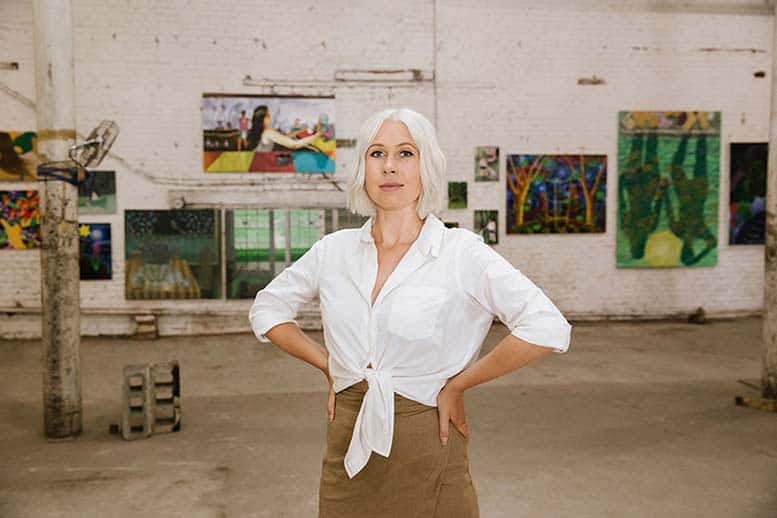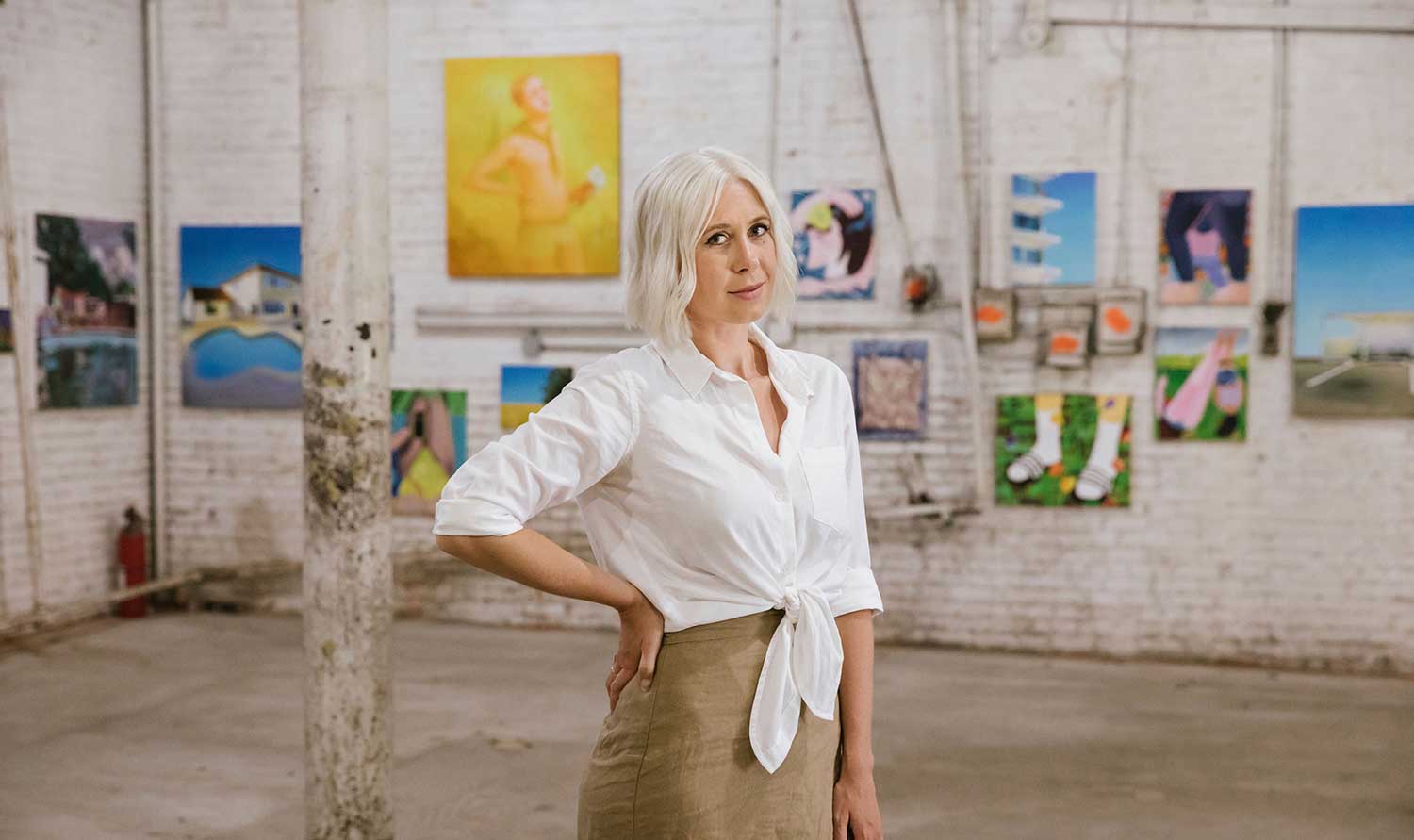Curator and writer Alexandra fanning elaborates on how important it is to tell a story via how art is presented in a space.
My evolution has seen me becoming a bit more discerning about the artists and galleries that I work with. It’s important for me to see that there is a good working relationship there, that there is mutual respect and that everyone’s opinions are being considered. An artist’s work is personal to them and they have a vision of how it is to be presented and that needs to be understood and respected.

Let’s start at the beginning. Tell us about your first event or curatorial decision that led you on this journey in art and curation.
I have always been interested in aesthetics and how objects can be arranged to convey an idea. From constantly arranging and rearranging my living spaces to curating images on printed page, it all sat together. My first professional curatorial decisions started during my years at the university where I took a class in curating and cultural leadership. It opened my eyes to how important the curatorial process is in how we experience the world. During that time I joined a new gallery initiative called Art Pharmacy dedicated to using empty spaces to show new and emerging artists, each show curated with a theme.
I went into publishing and took a break from curating, before joining Christie’s Auctions, where I was invited to be part of the team organising their annual staff art show. This got my curating juices back in action and I joined a collective with a space in Bushwick called Secret Dungeon where I curated several shows, one of which was featured in a two page spread in the New York Times. Since then I have consulted with artists for their shows and done some fun pop-ups with artists like Kidsuper, and presented several solo booths during Spring Break Art Show.
How did your tryst with art and artists begin?
I decided I wanted to be an artist at a young age. I spent all of my free time in classes from painting and drawing to ceramics, sculpture and printmaking. It was those art classes that I did well in, and decided that I wanted to work in the art world in some capacity.
Eventually I found I was more interested in writing about art than physically making it. So I changed majors to art history and really enjoyed and thrived in writing about the theories behind art.
What is the primary role of a curator?
I believe the primary role of curator is to assist the artist in telling their story. It is about examining and understanding the spaces where they are exhibiting. It is also about seeing how people move around them and develop a plan to show the work in its best light. It’s really about designing the experience of how the work is seen. Curators help to formulate the concept for the artist and take key storylines as talking points for the gallery and visitors.
Take us through your process and continuous frameworks of reference. How does your relationship with an artist evolve?
My process always involves several studio visits and a deep dive into every work, series, idea, interest and concept the artist has worked on throughout their career. Depending on the framework for the show, I work closely with the artist to pull pieces, first in chronological order and then deciding on the aesthetics of the show. I consider the size of each work, overall look and coloration of the selection, how they look in the space and so on. Artists usually tell me the story of the work and how it came about as we continue this process, and I get a very personal sense of why certain aesthetic decisions were made and in what order the works are designed to be presented according to the artist’s needs.
How do you describe yourself in the context of challenging people’s perspectives via your work?
My philosophy is to always tell a story. I personally feel that people buy work that tells a story relatable to theirs or teaches them something new. I collect work that I can explain with a fascinating angle in a few sentences.
How do you balance the contradicting elements of your work?
I think that you have to be prepared to do it all or it’s a disaster. There are a lot of logistical moving parts when putting on a show. You have to be flexible and dedicated to the project, let in some emotional creativity but also recognise that some things will not go according to plan and that’s okay.
How do you deal with the conceptual difficulty and uncertainty of creating a new show?
I have come to really value and admire when someone does something difficult to see or politically adverse. I think those are shows we remember and learn from.
How does it all come together? What were the biggest challenges?
I would say that raising funds and logistics involved with consigning and shipping are the biggest challenges. I enjoy critical writing as it is my background, and the marketing and PR is what I do for a living… so that comes naturally. Having people around you who are handy is something that I have always been lucky with. So, having a community of art lovers beside you is a must!

Accolades and hiccups: what was the biggest learning experience?
The accolades come as good critical press and a happy artist. Working so closely with people really means you form some amazing relationships and this is the reason I have done this for so long. I’m so lucky to have worked with and formed friendships with so many artists I admire.
I would say that the biggest learning experience would be working within a strict budget. Putting on a show is an expensive venture, and it can be a fun challenge to use all of your resources to make it happen.
Tell us about your own personal evolution vis-a-vis the work that you do.
My evolution has seen me becoming a bit more discerning about the artists and galleries that I work with. It’s important for me to see that there is a good working relationship there, that there is mutual respect and that everyone’s opinions are being considered. An artist’s work is personal to them and they have a vision of how it is to be presented and that needs to be understood and respected. I enjoy when these needs are met and everyone is happy.
You have spent a lot of time amongst artists. What have you observed?
There’s a very specific personality needed to be an artist. I think the reason I couldn’t do it was that I just didn’t have that absolute need to be creative or get something down on paper or spend an entire day or night on something that I might not like later on. There’s a drive that good artists have that I admire.
Which shows, performances and experiences have shaped your own creative process? Who are your maestros?
Growing up in Australia, I really felt like the art we saw was confined to either our local stars like Brett Whitely and Shaun Gladwell, and UK-based artists like Bridget Riley and Anish Kapoor and, from the USA, mega blue chip gallery artists like Jeff Koons. I feel like living in New York has opened me up to how an art show can stop the art world in its tracks. I was fascinated by the conversations sparked by Dana Schultz’s Open Casket at the 2017 Whitney Biennale. I think Christopher Y. Lew and Mia Locks really did a wonderful job and I follow them.
How do people interact and react to the work you put out?
Aesthetically I gravitate toward fun colourful work with a deeper, sometimes disturbing story behind it. My usual reaction is “wow this is fun” which turns into “oh is that what I think it is?” I really enjoy work that you have to stay with and which reveals more while you examine it.
What are you working on now? What should we look forward to?
At the moment I’m looking to do something new and different. I won’t be around for this year’s Spring Break Art Show, so I’ll have to think about any pop-up opportunities that come my way. Stay tuned!
Before you go – you might like to browse the Asian Curator curatorial archives . Contemporary art curators and international gallerists define their curatorial policies and share stories and insights about the inner runnings of the contemporary art world.












Add Comment